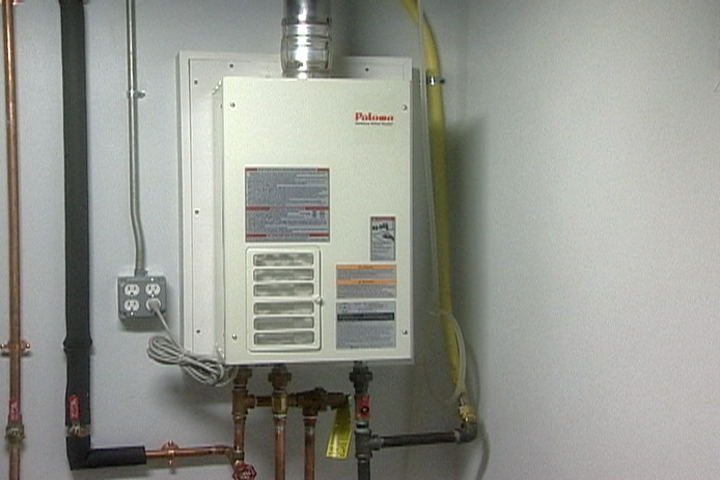Are you hunting for facts and techniques concerning Tips on Maintaining a Water Heater?

Warm water is important for everyday convenience, whether it's for a refreshing shower or washing meals. To guarantee your warm water system runs efficiently and lasts much longer, routine maintenance is vital. This article offers practical pointers and insights on how to keep your home's hot water system to avoid disruptions and costly repair work.
Intro
Keeping your home's hot water system might seem challenging, however with a couple of straightforward actions, you can ensure it operates smoothly for many years ahead. This overview covers every little thing from recognizing your warm water system to do it yourself upkeep tips and knowing when to call professional help.
Significance of Preserving Your Warm Water System
Routine maintenance not only expands the life-span of your warm water system yet additionally guarantees it runs successfully. Disregarding upkeep can bring about lowered effectiveness, greater energy bills, and even premature failing of the system.
Signs Your Hot Water System Requirements Upkeep
Understanding when your warm water system requires focus can prevent major concerns. Keep an eye out for signs such as inconsistent water temperature, odd noises from the heating unit, or corroded water.
Purging the Hot Water Heater
Flushing your hot water heater eliminates debris accumulation, enhancing effectiveness and prolonging its life.
Checking and Changing Anode Rods
Anode poles prevent deterioration inside the tank. Inspecting and replacing them when broken is essential.
Facility Problems Needing Professional Aid
Instances include significant leaks, electrical problems, or if your hot water heater is regularly underperforming.
Routine Expert Maintenance Conveniences
Expert maintenance can consist of complete evaluations, tune-ups, and ensuring conformity with safety criteria.
Examining and Adjusting Temperature Level Settings
Changing the temperature level settings makes certain ideal efficiency and safety and security.
DIY Tips for Maintenance
You can do several upkeep jobs yourself to maintain your warm water system in top condition.
Looking for Leaks
Consistently examine pipelines and connections for leakages, as these can lead to water damages and greater bills.
Comprehending Your Warm Water System
Before diving right into maintenance jobs, it's helpful to comprehend the standard components of your hot water system. Commonly, this includes the hot water heater itself, pipelines, anode rods, and temperature controls.
Month-to-month Maintenance Tasks
Regular regular monthly checks can aid catch small concerns before they intensify.
Checking Stress Relief Valves
Evaluating the stress relief valve ensures it works appropriately and prevents excessive pressure accumulation.
Shielding Pipelines
Shielding hot water pipes decreases warm loss and can conserve power.
When to Call a Professional
While do it yourself upkeep is valuable, some issues need expert expertise.
Conclusion
Routine upkeep of your home's hot water system is vital for performance, longevity, and cost savings. By following these suggestions and knowing when to look for specialist assistance, you can make sure a reputable supply of hot water without unforeseen disruptions.
Water Heater Maintenance Tips
Test the TPR Valve
Shut off the power and the cold-water supply valve. Place a bucket under the pipe connected to the temperature-pressure-release (TPR) valve on the top or side of the tank. (This valve opens if the tank pressure gets too high.) Lift the valve’s tab to let some water out, then let go. If water keeps flowing, drain the tank partway, unscrew the old valve with a pipe wrench, and install a new one. Check the Anode Rod
Put a hose to the tank’s drain cock and let out a few gallons of water. Now fit a 1 1/16-inch socket onto the rod’s hex head on top of the heater (or under its top plate) and unscrew the rod. If it’s less than ½ inch thick or coated with calcium, buy a new one, wrap its threads with Teflon tape, put it back in the tank, and tighten securely. Use this segmented rod if headroom above the tank is limited. Drain the Tank and Wash Out Sediment
Drain the remaining water in the tank into the bucket, then stir up the sediment on the tank’s bottom by briefly opening the cold-water supply valve. Drain and repeat until clean water comes out of the hose. Close the drain cock, refill the tank, and turn its power back on. Adjust the Temperature
Find the temperature dial on the side of the tank and unscrew its cover. Adjust the dial to 120 degrees using a flathead screwdriver. For every 10 degrees the temperature is lowered, you can expect to save up to 5 percent in energy costs. Turn the water heater off or the thermostat down to its lowest setting if you plan to be away from home for more than three days. Insulate the Pipes
Buy some self-sticking 3/8-inch-thick foam pipe insulation that matches the pipes’ diameter. Slide the foam over the hot-and cold-water pipes as far as you can reach. Insulating the cold-water pipe prevents condensation in summer. Peel the tape and squeeze the insulation closed. If the pipe is 6 inches or less from the flue, cover it with 1-inch-thick unfaced fiberglass pipe wrap. https://www.thisoldhouse.com/plumbing/21016402/how-to-maintain-a-water-heater
We hope you enjoyed reading our section about How to Maintain Your Water Heater & Prolong its Life. Many thanks for taking the time to browse our piece. Sharing is good. One never knows, you could be helping someone out. Thanks for being here. Don't forget to check our site back soon.
Book A Service